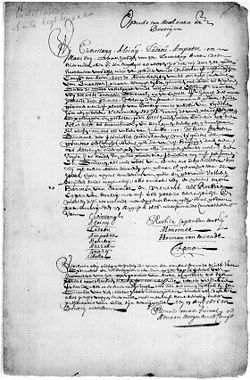
Cape Coast Castle is one of about forty "slave castles", or large commercial forts, built on the Gold Coast of West Africa by European traders. It was originally a Portuguese "feitoria" or trading post, established in 1555, which they named Cabo Corso.
John Canoe, also known as January Conny, was the European name given to an Akan warrior from Axim, Ghana. He was a chief of the Ahanta people in the early 18th century, who established a stronghold in the defunct Fort Fredericksburg and fought multiple wars with European traders for twenty years. The stronghold finally fell in 1725, though Canoe's fate is unknown. He is commemorated in the Junkanoo festival held in the Caribbean each December.

The Dutch Gold Coast or Dutch Guinea, officially Dutch possessions on the Coast of Guinea was a portion of contemporary Ghana that was gradually colonized by the Dutch, beginning in 1612. The Dutch began trading in the area around 1598, joining the Portuguese which had a trading post there since the late 1400s. Eventually, the Dutch Gold Coast became the most important Dutch colony in West Africa after Fort Elmina was captured from the Portuguese in 1637, but fell into disarray after the abolition of the slave trade in the early 19th century. On 6 April 1872, the Dutch Gold Coast was, in accordance with the Anglo-Dutch Treaties of 1870–71, ceded to the United Kingdom.

The Treaty of Axim was concluded between the Netherlands and the chiefs of Axim in the western region of the Gold Coast and signed at Fort St. Anthony near Axim on 17 February 1642. The treaty regulated the jurisdiction of the Netherlands and the Dutch West India Company in the town and polity of Axim after the Dutch West India Company had successfully attacked the Portuguese who were the occupants of Fort St. Anthony in the town. Over time, the agreement was in part superseded and replaced by new contracts and agreements. The treaty did remain the basis for Dutch jurisdiction and political relations between Axim and the Dutch until the latter left the Gold Coast in 1872.

Badu Bonsu II was a leader of the Ahanta who originally migrated south and separated from the Fante people upon reaching the Pra River and a Ghanaian king who was executed in 1838 by the Dutch, who, at the time, were in control of the Dutch Gold Coast.
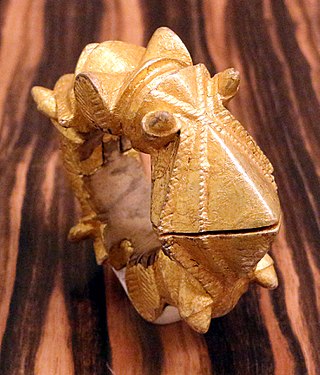
The Ahanta/Ayinda are Akan People who live to the north and east of the Nzema. The Ahanta land has been historically known as one of the richest areas on the coast of what is now Ghana.

Fort Saint Anthony was a fort built by the Portuguese in 1515 near the town of Axim, in what is now Ghana. In 1642, the Dutch captured the fort and subsequently made it part of the Dutch Gold Coast. The Dutch expanded the fort considerably before they turned it over, with the rest of their colony, to the British in 1872. The fort is now the property of the Ghanaian state and is open to the public.
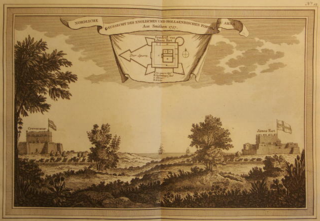
Ussher Fort is a fort in Accra, Ghana. It was built by the Dutch in 1649 as Fort Crèvecœur, and is two days' march from Elmina and to the east of Accra on a rocky point between two lagoons. It was one of three forts that Europeans built in the region during the middle of the 17th century. Fort Crèvecœur was part of the Dutch Gold Coast. The Anglo-Dutch Gold Coast Treaty (1867), which defined areas of influence on the Gold Coast, transferred it to the British in 1868. Because of its significance in the history of European colonial trade and exploitation in Africa, the fort was inscribed on the UNESCO World Heritage List in 1979.

Fort Batenstein was a fort and trading post established by the Dutch on the Gold Coast in 1656. It was situated near Butre. The fort was ceded with the entire Dutch Gold Coast to Britain in 1872.
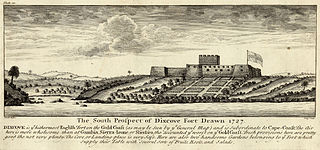
Fort Metal Cross, originally Fort Dixcove, is a military structure located on a promontory at the fishing community of Infuma in Dixcove, in the Western Region of Ghana. Because of its history in the Atlantic slave trade and its testimony to European-African trade, the Fort was included as one of the Forts and Castles of Volta, Greater Accra, Central and Western Regions that became a World Heritage Site in 1979.
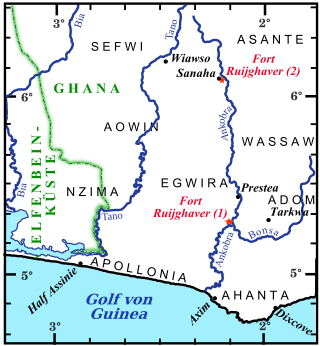
Fort Ruychaver, also Fort Ruijghaver, was a Dutch trading post in the hinterland of the Gold Coast, in contemporary Ghana. It existed between 1654 and 1660 on the banks of River Ankobra. The name of the post goes back to Jacob Ruijghaver, the director of the Dutch West India Company's possessions on the Gold Coast, who ordered its establishment.
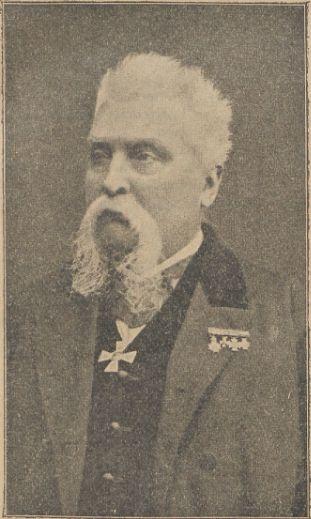
Cornelis Johannes Marius Nagtglas was a Dutch politician and civil servant, who made a career in the administration on the Dutch Gold Coast. After originally beginning his career at the advanced age of 36, he was promoted through the ranks to eventually become Governor of the Dutch Gold Coast in 1858. He retired to the Netherlands in 1862, but returned to the Gold Coast as governor in 1869, to restore order in the embattled colony. In 1871, he left the Gold Coast again, one year before the transfer of the colony to the United Kingdom.
The Dutch–Ahanta War was a conflict between the Netherlands and the Ahanta between 1837 and 1839. Beginning with a mere economic dispute between the Ahanta and the Dutch, who were based at the Dutch Gold Coast, the conflict ended with the hanging of Ahanta king Badu Bonsu II and the reorganization of the Ahanta state, establishing a Dutch protectorate over the Ahanta.

Butre is a village in the Ahanta West district, district in the Western Region of Ghana. Butre contains the Fort Batenstein Castle.
The Treaty of Asebu was concluded in 1612 between the Dutch Republic and the chiefs of Asebu on the Gold Coast of Africa. The treaty was the first among several concluded between the Dutch and the peoples of the Gold Coast, and marked the beginning of a 260-year period of Dutch presence on the Gold Coast.
Anthony van der Eb was a Dutch civil servant, who made a career in the administration on the Dutch Gold Coast.

Christiaan Ernst Lans was a soldier in the Royal Netherlands Army who by royal decree of 2 December 1832 was appointed Commander of the Dutch Gold Coast. He took office on 11 May 1833 and served until 1836, upon which he returned to the Netherlands.
Willem Pieter Antonie Le Jeune, born as Willem Pieter Antonie Tenwinkel, was a Dutch colonial administrator and diplomat, who made a career in the administration on the Dutch Gold Coast and who was interim governor between 28 October 1871 and 15 November 1871. After the Netherlands sold its possessions on the Gold Coast to the United Kingdom in 1872, Le Jeune became the first Dutch consul in Elmina.
Hubertus Varlet was a Dutch architect and colonial administrator, who served on the Dutch Gold Coast. In his capacity as master of works and stores, he rebuilt Fort Crèvecoeur in Accra in 1839. Following the promotion of Anthony van der Eb to governor of the Dutch Gold Coast, Varlet succeeded him as the second vice governor for the Ahanta protectorate, which the Dutch had proclaimed following the conclusion of the Dutch–Ahanta War.
